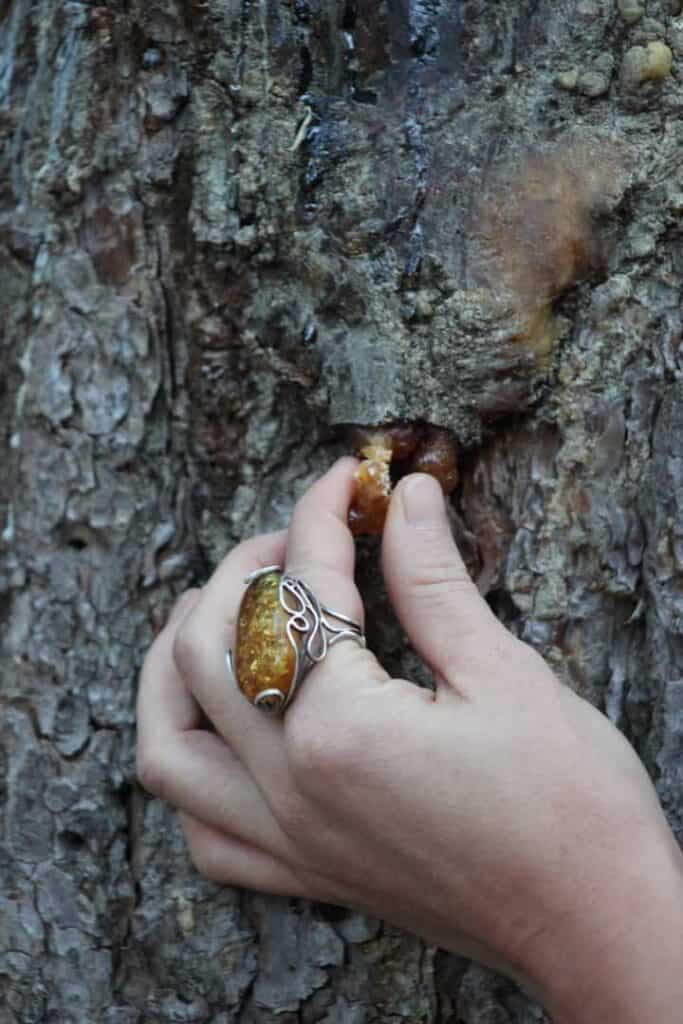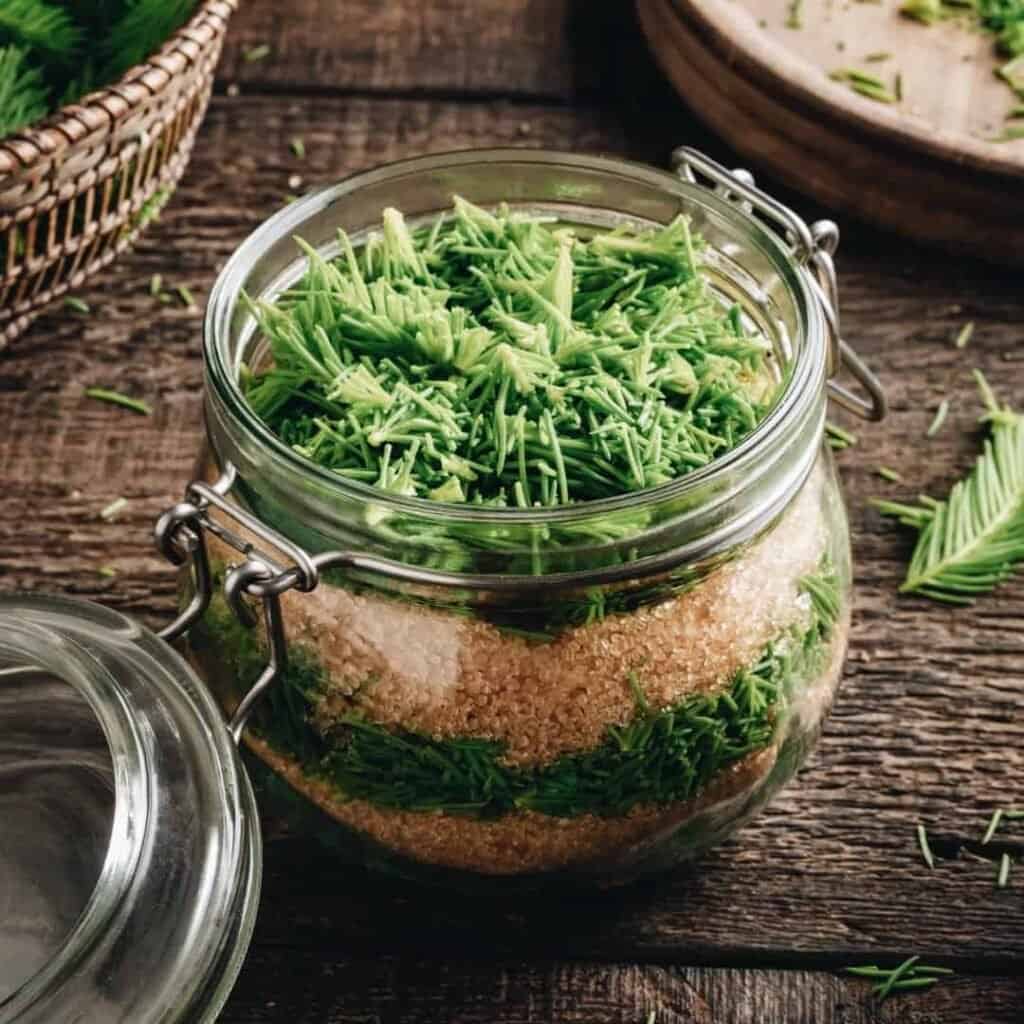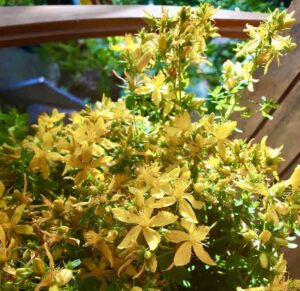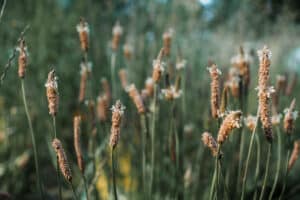Evergreen trees are revered around the world for their medicinal properties, rich folklore, and uplifting symbolism. Although you might be familiar with these trees from your walks through the forest or the holiday seasons, this year you can take your knowledge to the next level by learning how to use them medicinally at home and for your loved ones.
In today’s plant profile, you’ll learn:
- How the aromatic, pungent, and sour tastes correspond to Evergreens’ herbal actions
- The Evergreens’ affinity for the upper respiratory tract and other organ systems
- What Evergreens symbolize in traditions around the world
- Different ways you can prepare Evergreen medicine, from simmer pots to tinctures and everything in between
- How to make a delicious Spruce syrup – perfect for the holiday season!
Table of Contents
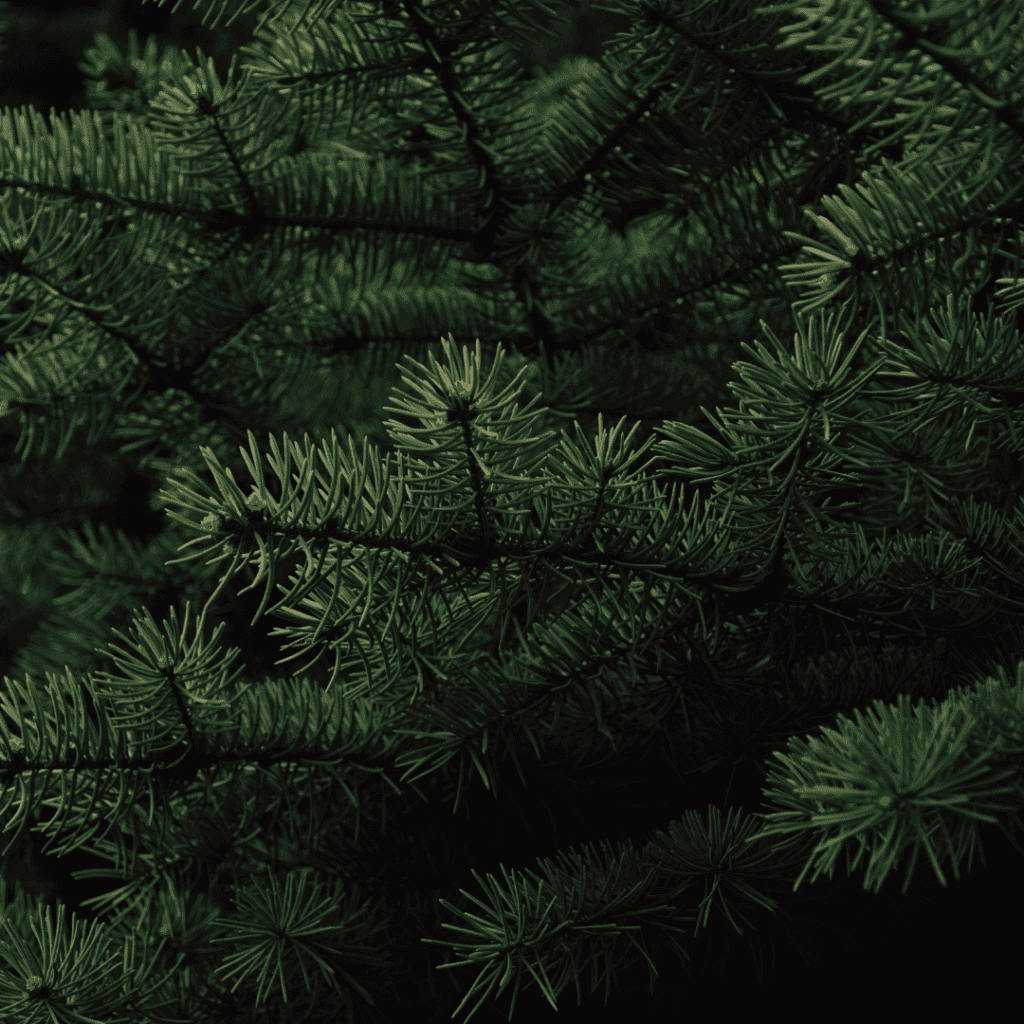
There’s nothing quite like walking through the forest during winter. If you’re lucky, you can traverse the dirt path of fallen leaves and deeply inhale the scent of winter – the Evergreens.
When you think about the Evergreens, you might have one or two specific trees coming to mind. However, this name refers to a broad range of medicinal trees, including Pines, Spruces, Firs, Cedars, and more! There are different types of Evergreen trees all around the world, and you can likely find one in your region if you look out for it.
Although the trees differ from one another in specific indications, many of the Evergreens share similar medicinal virtues. In today’s plant profile, you’ll learn the main historical and modern uses and applications for the beloved Evergreens.
Common and Latin names: Pine (Pinus spp.), Spruce (Picea spp.), Hemlock (Tsuga spp.), Fir (Abies spp.), Douglas Fir (Pseudotsuga menziesii) Note: not a true Fir, Cedar (Cedrus spp.), Arborvitae (Thuja spp.) This genus includes Western Red Cedar (Thuja plicata), which is not a true Cedar, Juniper- (Juniperus spp.)
Family: Pinaceae, Cupressaceae,
Tastes: Pungent, Aromatic, Sour (only for some fresh green tips, especially Fir)
Affinities: Upper Respiratory Tract (Throat, Bronchioles, Lungs), Kidneys & Urinary Tract (particularly the Junipers), Immune, Digestive, Circulatory
Actions: Antiseptic, Antibacterial, Carminative, Circulatory Stimulant, Stimulant Expectorant, Rubefacient
Energetics: Warming, Drying, Stimulant
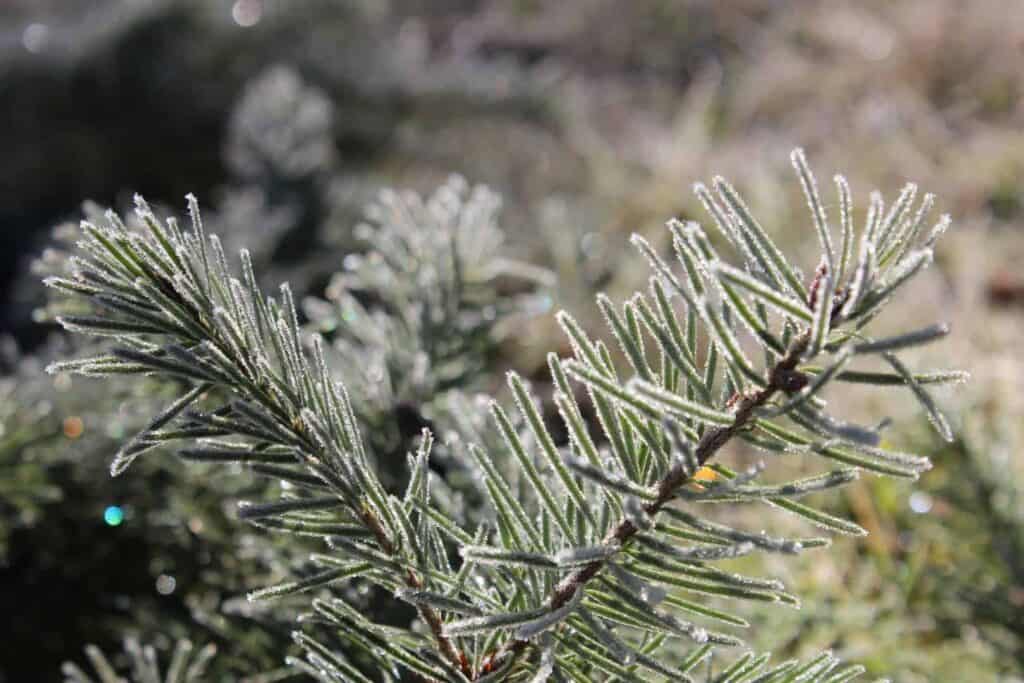
Taste
The invigorating scent you associate with the Evergreens is mainly due to their essential oil-rich needles, which protect the trees from bacteria, infection, and fungi. These terpene-rich volatile oil compounds give the Evergreens a richly aromatic and pungent flavor. Although these aromatic needles are the parts typically used medicinally, you can also consume the young Fir (Abies spp.) tree tips, which have a sour taste due to their high levels of vitamin C.
Affinities
The main organ affinity of the Evergreens is the upper respiratory system, which includes the throat and bronchioles, with some gettinig a bit lower into the lungs. With their pungent and warming volatile oils, Evergreens yield a stimulant expectorant effect, open the lungs, improve the breath capacity, and alleviate coughs, particularly when they’re cold and damp.
With their antiseptic and broad-spectrum volatile oils and immune stimulant qualities, Evergreens have a secondary affinity for the immune system. I see this working together with their effect on the upper respiratory system. The fresh Fir tips (Abies spp.), in particular, are significantly high in vitamin C and have a stronger effect on the immune system than the older growth, which act more on respiration.
Some trees, such as Juniper (Juniperus spp.), have additional organ affinities like the kidneys and urinary tract. However, you could say that all Evergreen trees impact the respiratory, immune, circulatory, and digestive systems through their volatile oils content which stimulates and drives blood flow.
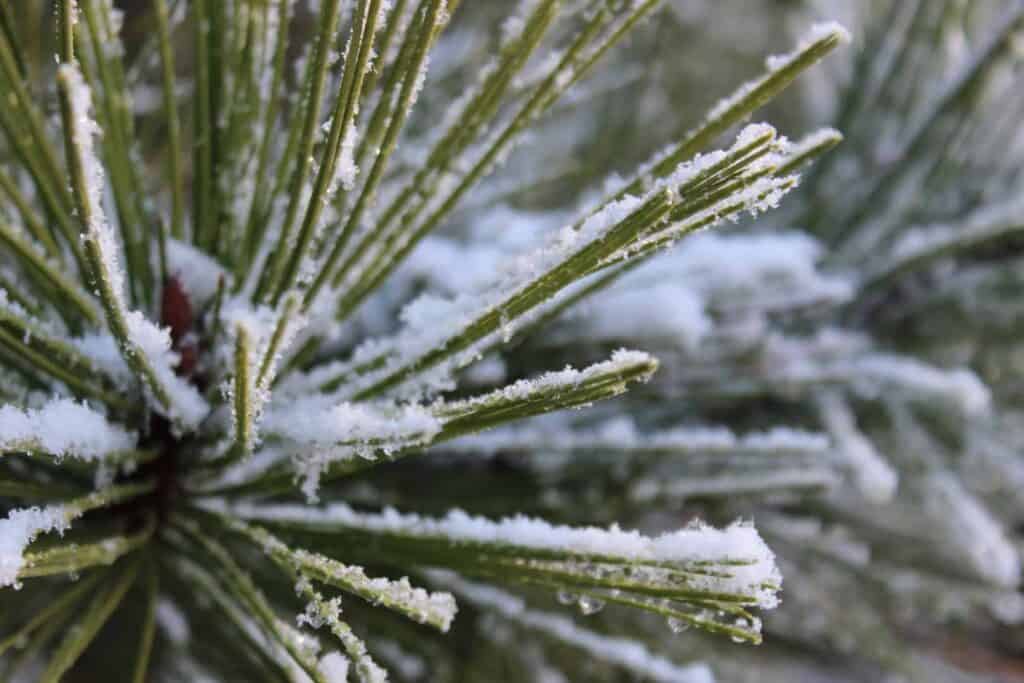
Actions
Evergreens are used most often for their stimulant expectorant property. When you enjoy Evergreen medicine as a tea or tincture and take a breath, you inhale the medicinal compounds deep into your lungs. Once there, they break up cold, damp, and stagnant mucus. Through this, they open your lungs and assist you in breathing deeper and clearer.
Although Evergreens are not antispasmodic, in my experience them feel like the “open up” the lungs, easing intense coughs, and support the respiratory system through clearing mucus with their dispersive, drying, and diffusive aromatic compounds. If you think about it, cold and damp environments have a sinking quality. Because the volatile oils in Evergreens are so warming, drying, and stimulating, they drive circulation and help to alleviate the heaviness of damp/cold states by the up and out movement of an expectorant.
Evergreens are rubefacient, which means they stimulate local circulation and drive the blood to the surface of the skin by opening the capillary beds. Through this mechanism, they mobilize and drain metabolic waste products that accumulate during patterns of excess cold and dampness. Over time, this build-up triggers the inflammatory response and leads to pain in the joints and musculoskeletal system. By improving circulation and driving blood to the local area, Evergreens drain the metabolic waste product accumulations, thereby lowering inflammation and pain.
Another action Evergreens are well known for is their stimulant expectorant effects. Through their pungent and aromatic compounds, they thin mucus and make it easier to out, thereby clearing the upper respiratory system of cold and stagnant mucus.
These same compounds grant Evergreens a slight carminative effect as they direct blood flow to the digestive system and improve digestive functioning. Lastly, Evergreens are immune stimulants and protect the body from infection with their broad-spectrum antiseptic and antibacterial oils.
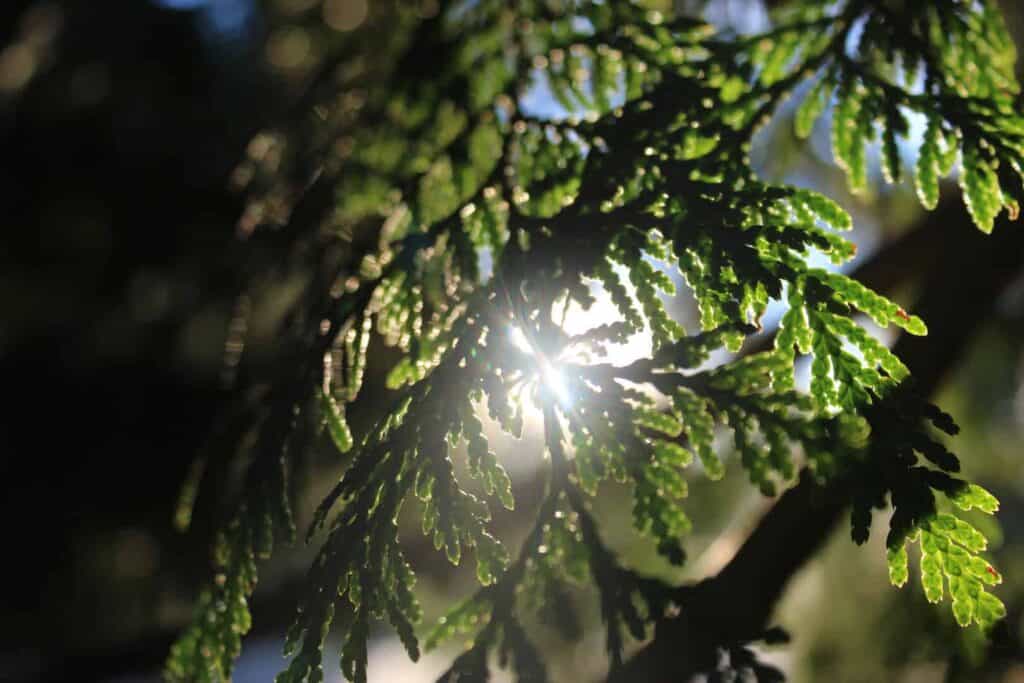
Energetics
Evergreens have a warming, drying, and stimulating effect on the body. Although there is variation between each type of Evergreen tree, these energetics are common between them. Ayurvedically, Evergreens decrease vata and kapha by warming the body and stimulating the tissues. For the same reasons, they may aggravate pitta.
These trees have a balancing effect on the cold/depression and damp/stagnation tissue states. They benefit cold/depression by warming the tissues, driving circulation, and improving organ functionality. Lastly, they balance damp/stagnation by drying excess moisture in the body when they’ve become congealed and thick due to poor circulation and mobilization of fluids in the body.
Psychological and Emotional Aspects
Evergreens have become powerful symbols of everlasting life in many cultures around the world. While all the other plants have died back, returned to their roots, or dropped all their leaves, the Evergreens continue to flourish, representing life persevering. Although wintertime is typically thought of as the season of metaphorical and literal darkness, Evergreens remain a vibrant green and continue to grow despite the dark and cold.
These trees are highly revered and brought into the home during winter because they represent rejuvenation, hope, and the knowledge that there will be light once again. They remind you on a personal level that no matter how dark the world feels, there will be light again. If you’re interested in learning more about the rich history and symbolism behind the Evergreens, you can read that blog post here.
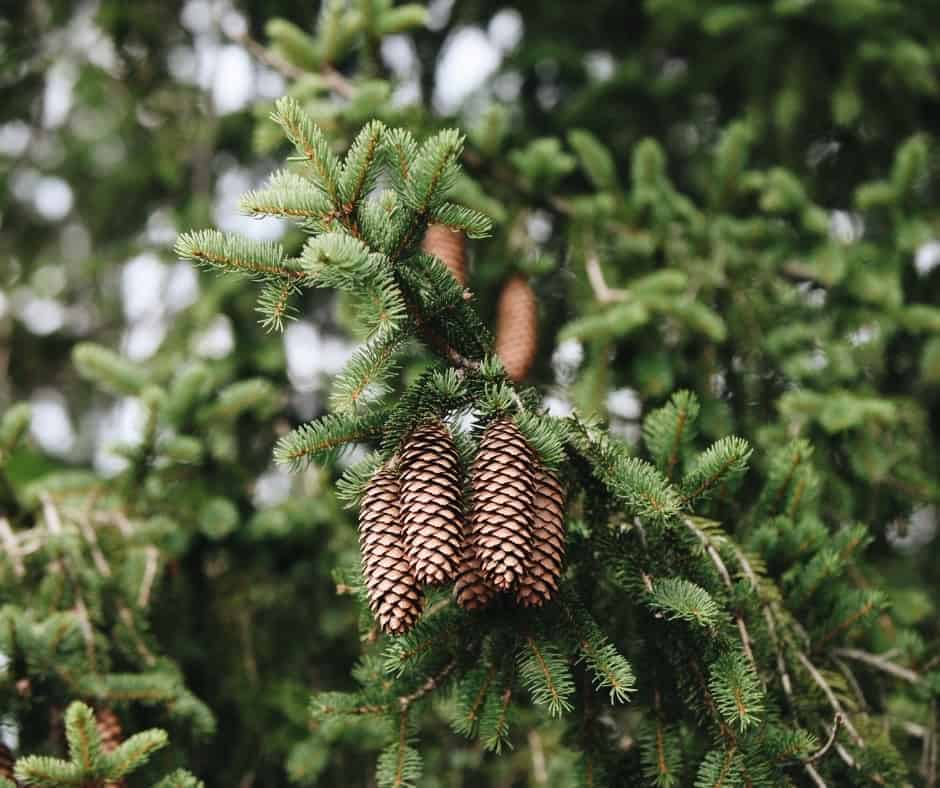
Preparation
You can harness the medicinal benefits of Evergreens through internal and external applications. For internal use, Evergreens yield a strong and aromatic tincture that stimulates the immune system, circulation, and expectorates a damp, cold cough. Red Cedar (Thuja spp.) in particular, is an excellent remedy for people exposed to black mold, fungi, or yeast in the home and have respiratory infections that are unresponsive to standard treatments.
I prefer fresh needles over dry ones since they produce a much more aromatic extraction. Because the fresh needles are terpene-rich, I use a higher percentage of alcohol of 70-80% at 1:2 so that it can extract these volatile compounds and produce a potent medicine.
Evergreens have a rich tradition of topical usage and can be used in many different ways. In Finnish traditions, Evergreens are placed in the sauna to diffuse their medicinal and aromatic compounds. There is also the traditional practice of slapping the green aromatic parts against the skin to stimulate blood flow to the peripherals, similar to how Nettle leaves (Urtica dioica) are used.
Another method for working with Evergreens is through diffusion. You can accomplish this in a few different ways. Firstly, you can add a few drops of essential oil to a diffuser. Secondly, you can place the fresh needles in a big pot of hot water and drape a towel over the back of your head for direct steam inhalation.
You can also use the folk method of preparing a simmer pot. For this, all you need to do is fill a pot with water, place it on your stove, add the fresh plant parts, and bring the water to a simmer. As the water rolls, your home will be filled with the scent of Evergreens. This adds moisture to the dry winter air and diffuses the fragrant aroma to make your home smell lovely, while also adding the medicinal properties of the volatile oils in the plants to help prevent respiratory illness. Most days throughout the winter we have a big pot of Evergreen steam going on our wood cookstove all day throughout cold & flu season.
Lastly, you can prepare an Evergreen herbal-infused oil which you can use as the base for anti-inflammatory and pain-relieving salves. This is an effective remedy for joint pain because of its rubefacient and analgesic (pain relieving) properties. Poplar buds (Populus balsamifera) are a great option because of their high levels of salicylates and combine well with Fir (Abies spp.), Spruce (Picea spp.), and Cedar (Cedrus spp.) oil. Many of the Evergreens also make a nice respiratory salve that can be rubbed on the chest and back during coughs.
The Evergreen trees, with their verdant boughs and healing properties, stand tall and strong. Their needles, bark, and sap have been used for centuries to treat a multitude of ailments. From boosting the immune system to reducing inflammation and improving respiratory health, the medicinal benefits of these majestic trees are vast and are a perfect winter medicine for the dark and cold months.
Classic Spruce Tip Syrup
This recipe comes from Alan Bergo of Forager Chef, and you can watch the full video on his website here.
Ingredients:
- 8 oz Spruce tips (Picea spp.)
- 16 oz organic brown sugar
Instructions:
- Combine the spruce tips and sugar and pack the mixture into a quart mason jar. Leave the jar at room temperature or in a cool and dark place. As time goes by, the spruce tips will release their liquid and will be absorbed into the sugar, forming a slurry. Allow the mixture to macerate for one month.
- After a month has passed, pour the contents of the jar into a pot and bring to a boil to dissolve the sugar. Strain, discard the spent tips, and store the syrup in a glass bottle.
- Store the finished syrup in the fridge and take a spoonful for a cough straight or in tea or simply enjoy on toast with cheese, baked goods, yogurt, and whatever else you can think of!


